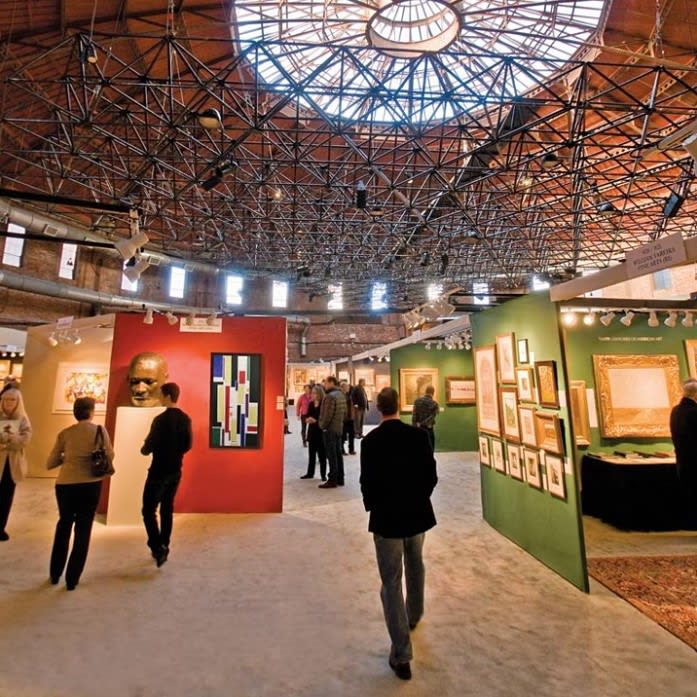Emile Gruppe was an unusually prolific artist. He was at his easel almost every day and created thousands of paintings over a career that lasted 60 years. At his peak, he was completing almost 200 oil paintings a year. Yet he has never failed to find an audience for his depictions of New England in autumn and winter, or his harbor scenes of Rockport and Gloucester in Massachusetts.
Gruppe was born in 1896 in Rochester, New York to an artistic family--his father, brother, sister and nephew were all artists. Emile spent his youth in Katwyk an Zee, a fishing village in Holland, where his father, Charles Gruppe, worked as both an artist and an art dealer. Emile lived in the Netherlands until he was 17, when the family returned permanently to the United States to avoid World War I.
In New York City, Gruppe attended classes at the National Academy of Design and at the Art Students League, where he studied under Charles Chapman and George Bridgman. He also studied with John Carlson in Woodstock, New York, where he gained an appreciation for outdoor painting. Carlson “turned me into a painter,” he later said.
Gruppe helped found the Rockport Art Association in 1921, but he is most closely linked to Gloucester where he lived from about 1940 until his death. He operated the Gloucester School of Painting from the 1940s into the 1970s and helped turn the Rocky Neck area of East Gloucester into a world-famous art colony. The school boasted an impressive faculty but Gruppe’s own exuberant plein-air demonstrations were often the highlight of the week.
Gloucester, with its fleet of whimsically painted fishing vessels, crowded wharf buildings and shacks, and picturesque inhabitants, never ceased to fascinate Gruppe. He also helped popularize Rockport’s famous fishing shack known as Motif #1, sometimes called “the most often-painted building in America.”
By the 1940s, Gruppe was one of the most prominent of the Cape Ann artists, a group that included Frederick Mulhaupt, Anthony Thieme, Theresa Bernstein, Marguerite Pierson, William Lester Stevens, and Aldro Thompson Hibbard. The painters of this ‘Cape Ann School’ were some of the first U.S. artists to employ plein air painting techniques. Gruppe’s style, which tended toward Tonalism early in his career, mutated into a bold impressionism in the 1940s and 1950s.
Gruppe occasionally traveled to Jeffersonville, VT where he loved to paint the picturesque country roads, farms, and forests, sometimes with distinctive white birch trees. Later in life, he wintered in Florida where he painted some tropical scenes. Though Gruppe suffered a stroke in the early 1970s, he continued to paint until his death in 1978. On the morning he died, the 82-year-old artist had stretched a canvas in preparation for a day of painting.
Gruppe’s portrayals of the archetypal the houses, harbors, and rural landscape of New England have never gone out of style. His expressive impressionistic paintings continue to appeal to twenty-first-century sensibilities of a seemingly eternal New England, barely touched by modernity.




